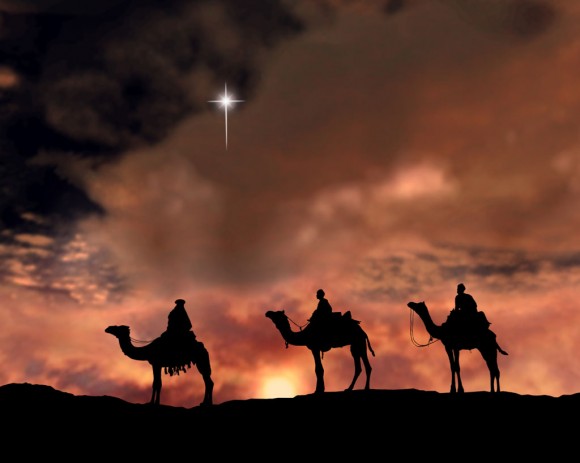'Tis the season… And every year around this time people notice the brilliant 'star' to the west just after sunset. For astronomers, we know it's the appearance of the planet Venus, but noticing it for the average person brings on questions about the holidays. Was the Christmas Star real?
Regardless of your faith, the story of the 'Star of Bethlehem' is one of the most powerful and enigmatic symbols of Christianity. For centuries, scientists, scholars and historians have debated about the nature of this biblical light that heralded an event. Was it purely a divine sign, created miraculously to mark a special birth? Or was it an astronomical event in its own right?
David Reneke, news editor of Australia's Sky and Space Magazine, believes astronomers may have found the answer - or at least something that fits all the known facts - basing his research on the highly esteemed gospel according to Matthew, the first of the four gospels in the New Testament. It would appear to be the first written and this version places key players together in the same time period. "It's generally accepted by most researchers that Christ was born between 3 BC and 1 AD." says Dave. With the aid of modern astronomy software programs astronomers can reproduce the night sky exactly as it was, thousands of years ago. Humans are curious and so was Dave, so he turned back the hands of time and the stars to the time of that long ago Christmas…
"We found out something startling." said Reneke, "It looks like the 'Christmas star' really did exist,"
Two thousand years ago, astronomy and astrology were considered one and the same. The motions of the heavenly bodies were used to determine the events of history, and the fate of people's lives. Of the various groups of priests and prophets of this period, those which commanded the most respect were the Magi - whose origins are not entirely clear. Known as 'wise men' , we can only assume they were actually priests who relied on their knowledge of astronomy/astrology.
Armed with an approximate date, Dave assumed the 'Star of Bethlehem' was not just a localized event and could be observed by sky-watchers elsewhere in the world, not just by the Magi. Historical records and modern-day computer simulations indicate a rare series of planetary groupings, also known as conjunctions, during the years 3 BC and 2 BC In fact, this was one of the most remarkable periods in terms of celestial events in the last 3,000 years!
"Like the final pieces of a difficult jig-saw puzzle, our fabled biblical beacon is starting to reveal itself," David said. "On 12 August, 3 BC, Jupiter and Venus appeared very close together just before sunrise, appearing as bright morning 'stars.' It would have been visible in the eastern dawn sky of the Middle East from about 3:45 to 5:20 a.m."
But it didn't stop there. The crowning touch came ten months later, on 17 June 2 BC, as Venus and Jupiter joined up again in the constellation Leo. This time the two planets were so close that, without the use of our modern optical aids, they would have looked like one single, brilliant star. According to Dave's research, Jupiter was known as the "planet of Kings" and Saturn as the "Protector of the Jews". This could easily have been interpreted as a sign that the Jewish Messiah had been, or was about to be, born. Also, Leo was thought to denote royalty and power. An interpretation? Perhaps. But, do not forget the times in which this occurred. Astronomy and astrology intermingled. This whole sequence of events could have been enough for at least three astrologers to see this as sign in the heavens and make their way Jerusalem.
"Now, this doesn't mean that astrology works," Reneke said. "We haven't ruled out other possibilities for the Star of Bethlehem but it does make our search more rewarding to find a truly interesting astronomical event that happened during the most likely time for the Nativity."
Whatever the Star of Bethlehem was, it has had more impact on humankind than any star before or since. It is also possible that the mystery of the Star will never be completely solved. For many of us though, it is the mystery itself that drives us to find the solution.
Bron: universetoday
Voeg toe aan:








